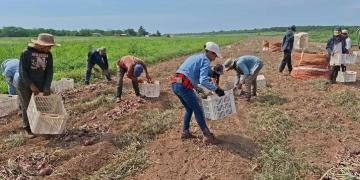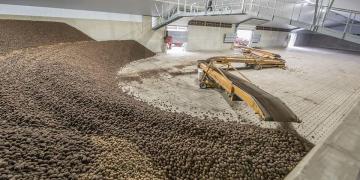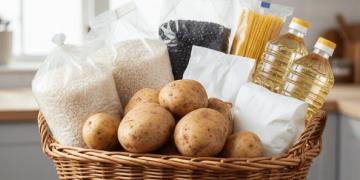Argentina recession but potato sector grows
Argentina’s inflation rates are among the highest in the world. Despite these turbulent times, the potato industry is booming.

Something strange is happening to Argentine potato production. The area under cultivation continues to grow, especially in the main growing region of Buenos Aires, but this does not always translate into healthy profits for growers. The potato industry in Argentina is facing significant challenges as producers face increasing financial losses, raising concerns about the sustainability of the sector. Rising production costs, combined with falling market prices, are making potato production increasingly unprofitable for many growers, who are traditionally small to medium-sized.
Mario Raiteri, vice-president of the National Federation of Potato Producers (Fenapp), notes that producers are currently suffering losses of up to €1,390 per hectare. This financial pressure is exacerbated by low seasonal demand and an oversaturated market, which makes it difficult for farmers to cover their production costs.
Overproduction
The 2024/25 season saw particularly favourable growing conditions, leading to overproduction and a sharp drop in prices on the table potato markets. This oversupply, combined with an economic recession that has reduced consumer purchasing power, has further complicated the potato market for producers.
The country has been plagued by a deep recession for years. With right-wing President Javier Milei in power, significant austerity measures have been implemented. As a result, 2024 ended with the first budget surplus in fourteen years, albeit only 0.3% of GDP. Meanwhile, the inflation rate was halved, from 221.4% to 117.8%. For farmers and processors in the country, economic conditions remain tough.
Growing area
The economic pressure is exacerbated by high taxes and rising input costs, creating a precarious situation for the sector. In the southeast of Buenos Aires, production costs have risen to almost €11,000 per hectare. The Buenos Aires production area, which accounts for 43% of national production, saw a 9.7% increase in area in the 2024/25 season, from 34,815 to 38,177 hectares. In early March, heavy rains damaged crops in this area. According to local sources, the national area in the previous season was around 84,700 hectares.
Despite the difficult economic conditions, international potato processors have entered the country in the past decade. McCain, Simplot, Lamb Weston and Pepsico all have factories, with Lamb Weston and Simplot recent investments. Lamb Weston invested €231.50 million in a new French fry plant in the coastal city of Mar del Plata in 2023. The facility has access to the prime growing area of Buenos Aires and is currently in the start-up phase. It also gives the US manufacturer the opportunity to export products overseas via the nearby deep-sea port.
Table potatoes remain a favorite
Argentina remains largely a table potato country, with 70% of total production destined for direct consumption. 25% of production is destined for processing (mainly French fries, followed by chips) and the rest is seed potatoes. Despite its proximity to the birthplace of the potato, Argentines consume relatively few potatoes compared to other Spanish-speaking countries.
In addition to Lamb Weston’s investment, the Balcarce region, southeast of Buenos Aires, has become an important center for the production of French fries. This area supplies potatoes to processing plants such as McCain Argentina, which mainly produces French fries for export to Brazil. This regional focus emphasizes Argentina’s role in supplying neighboring countries with processed potato products. Export volumes currently account for 8% of total potato production, but this is expected to grow thanks to the ambitions of international processing companies.
Fuente: boerenbusiness.nl/




